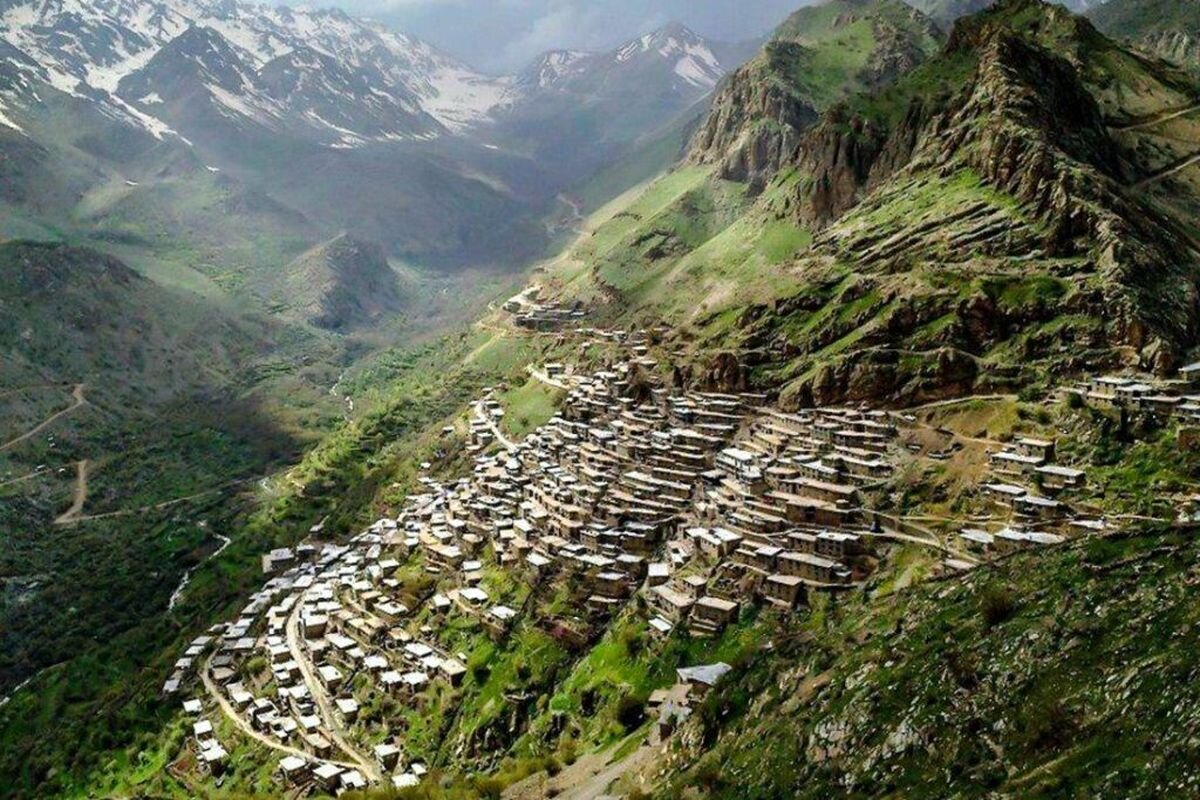From Sanandaj to Uraman: highlights of a road trip through kordestan

TEHRAN – Visiting Kordestan is a wonderful opportunity to experience a unique culture and meet people who proudly preserve their rich heritage.
The mountainous province may be best experienced on a road trip, allowing you to fully appreciate its varied attractions and beautiful landscapes. It's highly recommended to have a local guide, who can provide valuable insights into Kurdish culture and ensure a richer experience.
Situated in northwest Iran, Kordestan is known for its vibrant culture and strong sense of identity. Kordestan boasts high, cold mountains and historical terraced villages that provide a diverse array of landscapes to explore.
The capital city of Sanandaj is situated 458 km from Tehran and serves as a key tourist destination with numerous attractions. Marivan, another highlight of the province, lies on the border with Iraq and offers its own unique appeal.
A convenient itinerary might begin with a flight to Sanandaj, where you can start soaking in the Kurdish atmosphere. Must-see sites in Sanandaj include Khosro Abad Mansion, Moshir Divan Mansion, and Asef Varizi House. As you travel deeper into Kordestan, the historical city of Marivan, about two hours drive from Sanandaj, should be your next destination.
Approaching Marivan, you'll notice greener, more mountainous landscapes and an even greater prevalence of traditional Kurdish attire. Combining the highlights of Sanandaj and Marivan with visits to rural areas makes for a comprehensive cultural tour of Kordestan.
From Marivan, you can visit Zarivar Lake and the untouched villages around it, which offer spectacular natural views. The lake is also a hotspot for birdwatching. Another must-visit is Palangan, a picturesque village known for its terraced houses perched on mountain slopes, where each house's roof serves as another's yard.
The journey to Palangan, a two-hour drive from Marivan through the Kurdish mountains, is beautiful and worth the trip on its own. After exploring Palangan, you may head to Uraman Takht, the most renowned terraced village in Kordestan. Spending one or two nights in Uraman allows you to explore the village and its surrounding mountains, where locals maintain summer gardens.
In 2021, UNESCO added "Cultural Landscape of Hawaraman/Uramanat" to its list for Cultural Heritage, recognizing its testament to the traditional culture of the Hawrami people, an agropastoral Kurdish tribe that has inhabited the region since around 3000 BC.
Leaving Uraman, a day-long drive south through the mountains will take you to many small Kurdish villages, including Bolbar, Zhiwar, Novin, and eventually Hajij.
If indigenous music interests you, several towns are known for making the Tanbur, a traditional musical instrument, and are fascinating to visit.
For those interested in cultural attractions, anthropology, and natural exploration, even a one- or two-week journey through the Kurdish regions of Iran, including both Kermanshah and Kordestan provinces, may be amazing. In Kermanshah province, highlights include Kermanshah city, the Tagh-e Bostan inscription, and the UNESCO site of Bisotun. Moreover, Kermanshah has been recognized as a UNESCO Creative City of Gastronomy. It is also famous for its sweets, which are a must-try!
One of the most striking aspects of the Kordestan people, also known as Kurds, is their traditional attire. Women wear colorful long dresses with long sleeves and intricate embroidery, while men don large baggy pants and jackets. This traditional clothing is commonly seen whether you visit a small village or wander through a large city.
The most attractive traditional outfits are worn during special celebrations such as Nowruz, which marks the Persian New Year, the ancient Pir-e Shalyar celebration in Uraman Takht, and vibrant wedding ceremonies.
The history of Kurdish settlements in the region dates for millennia, long before the Islamic conquests of the 7th century. The Kurdish language is believed to have derived from early Persian dialects, and the Kurdish people encompass a wide range of tribal and ethnic groups from the region.
AM
Leave a Comment